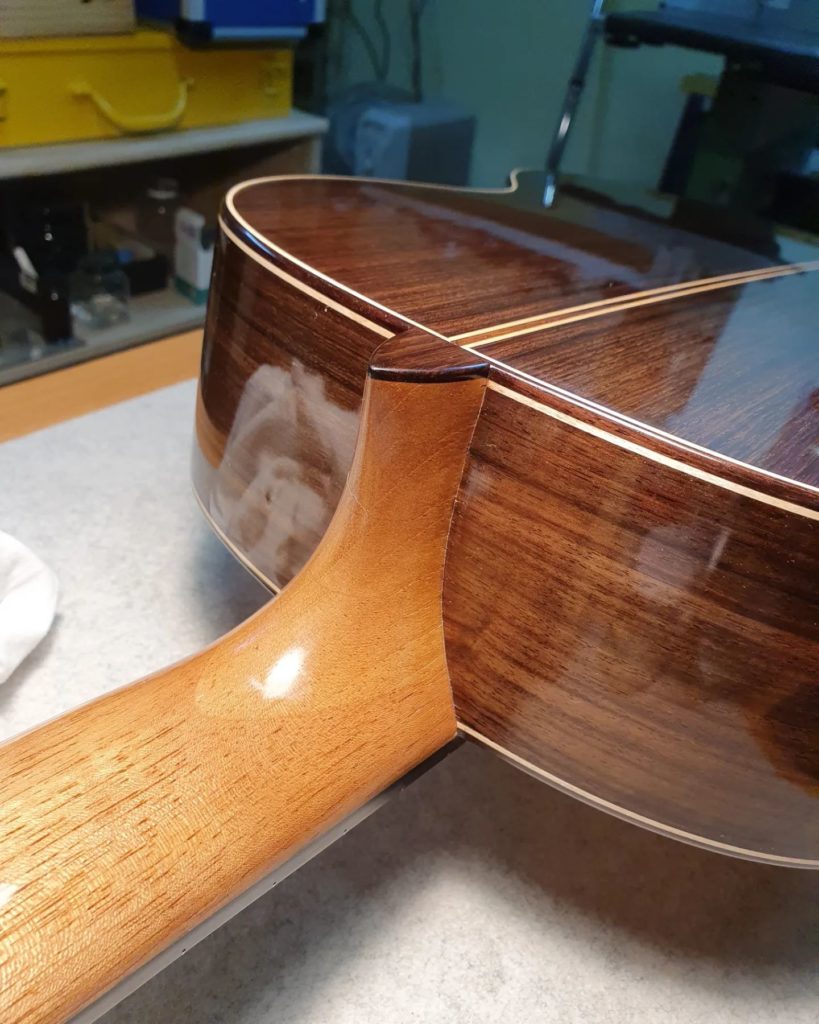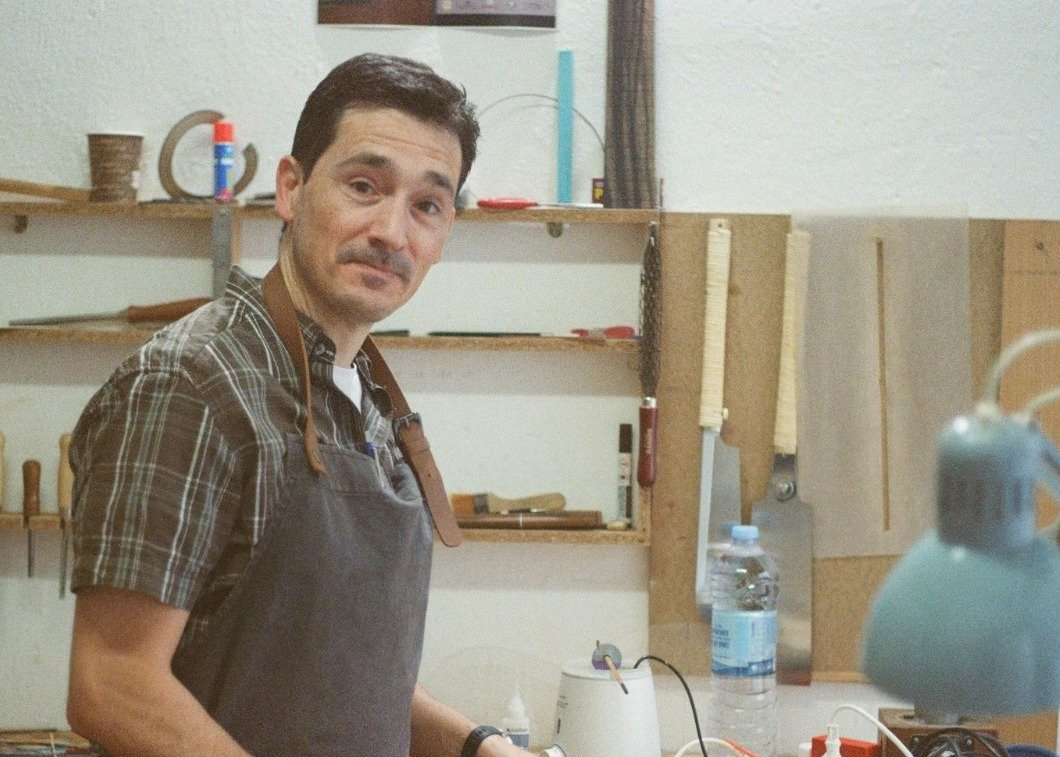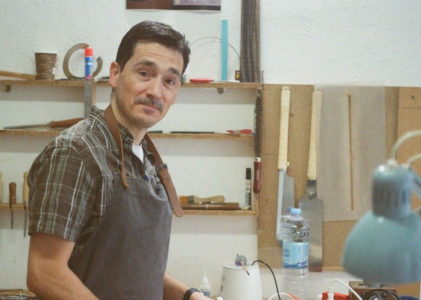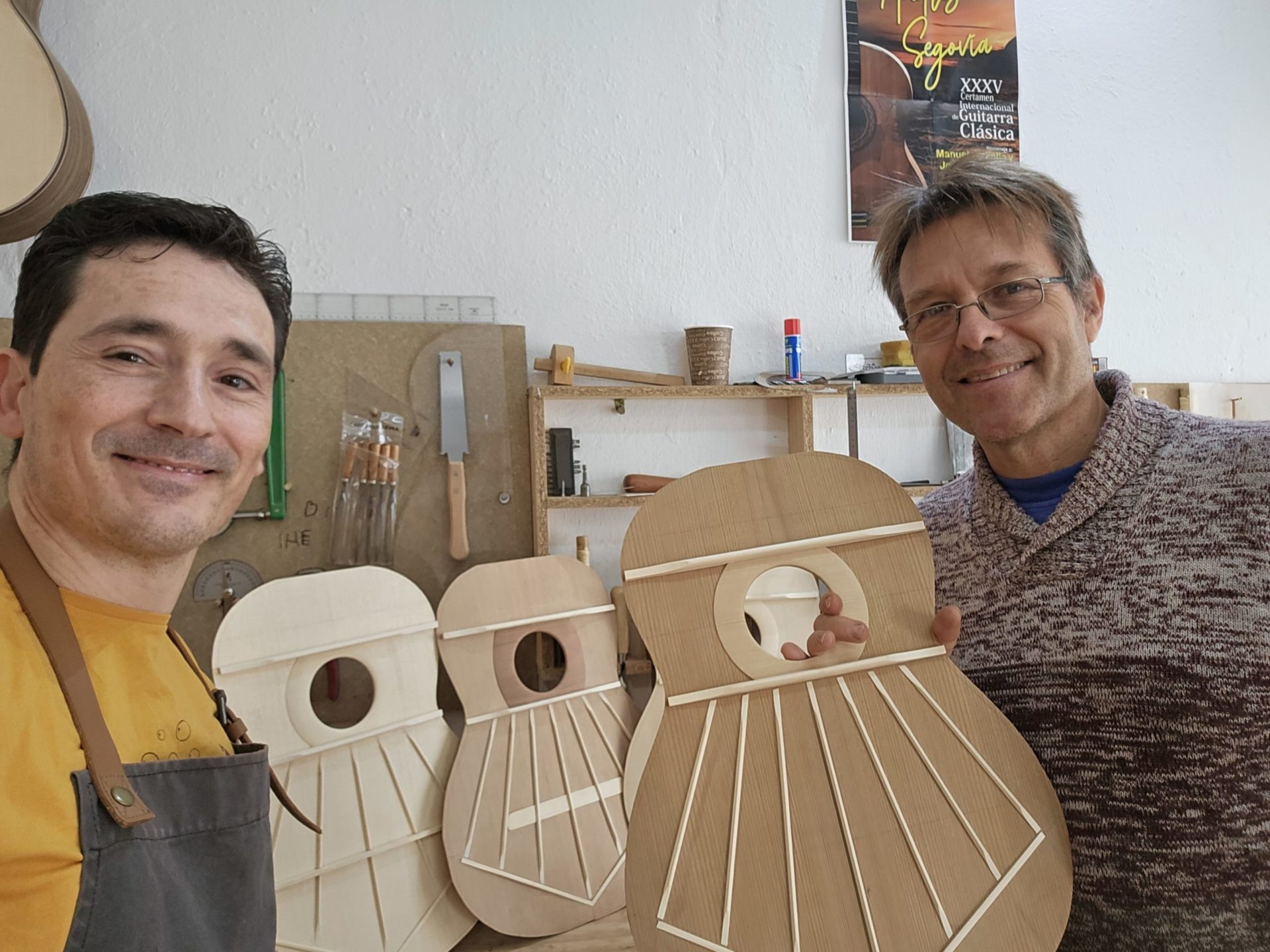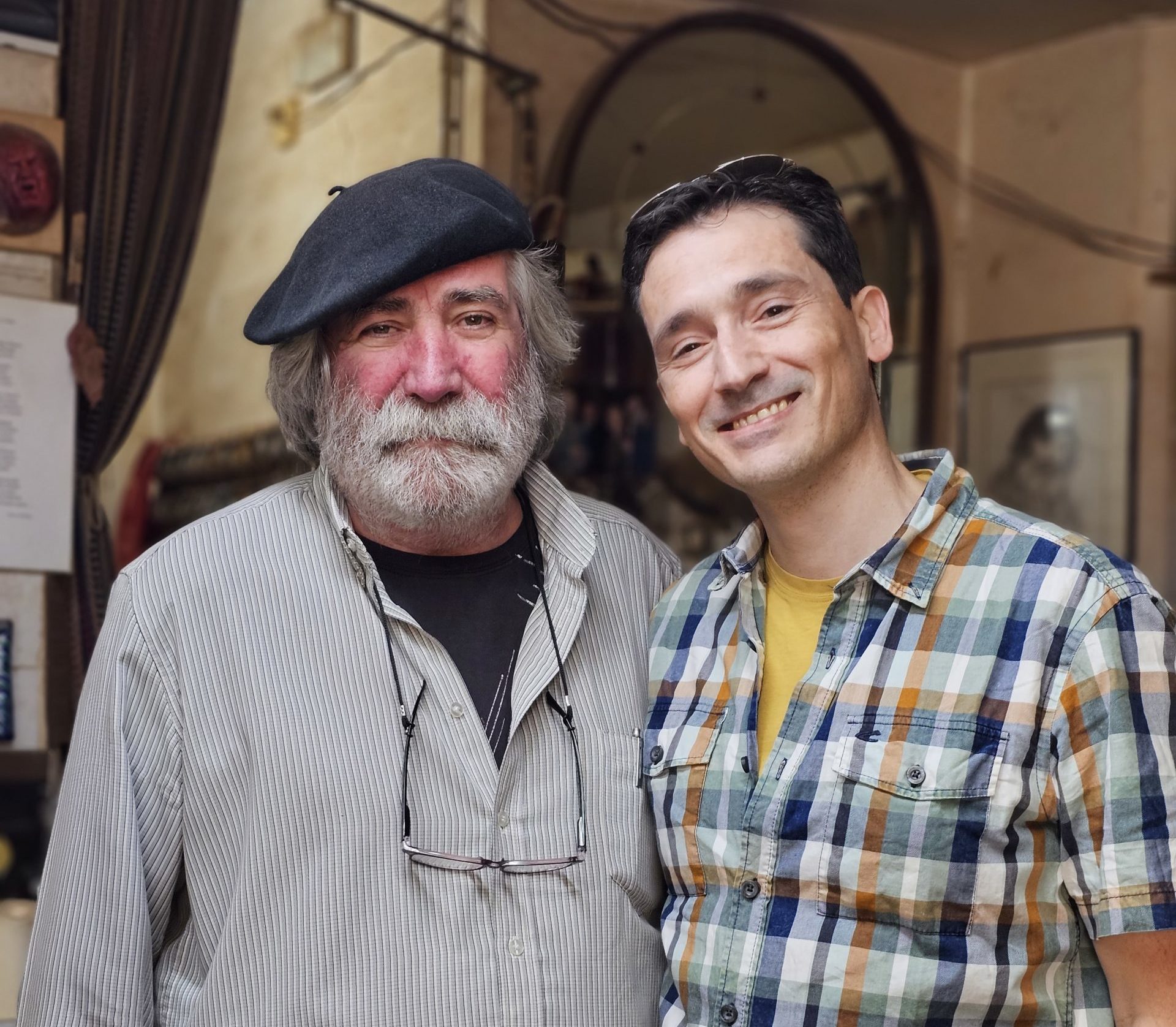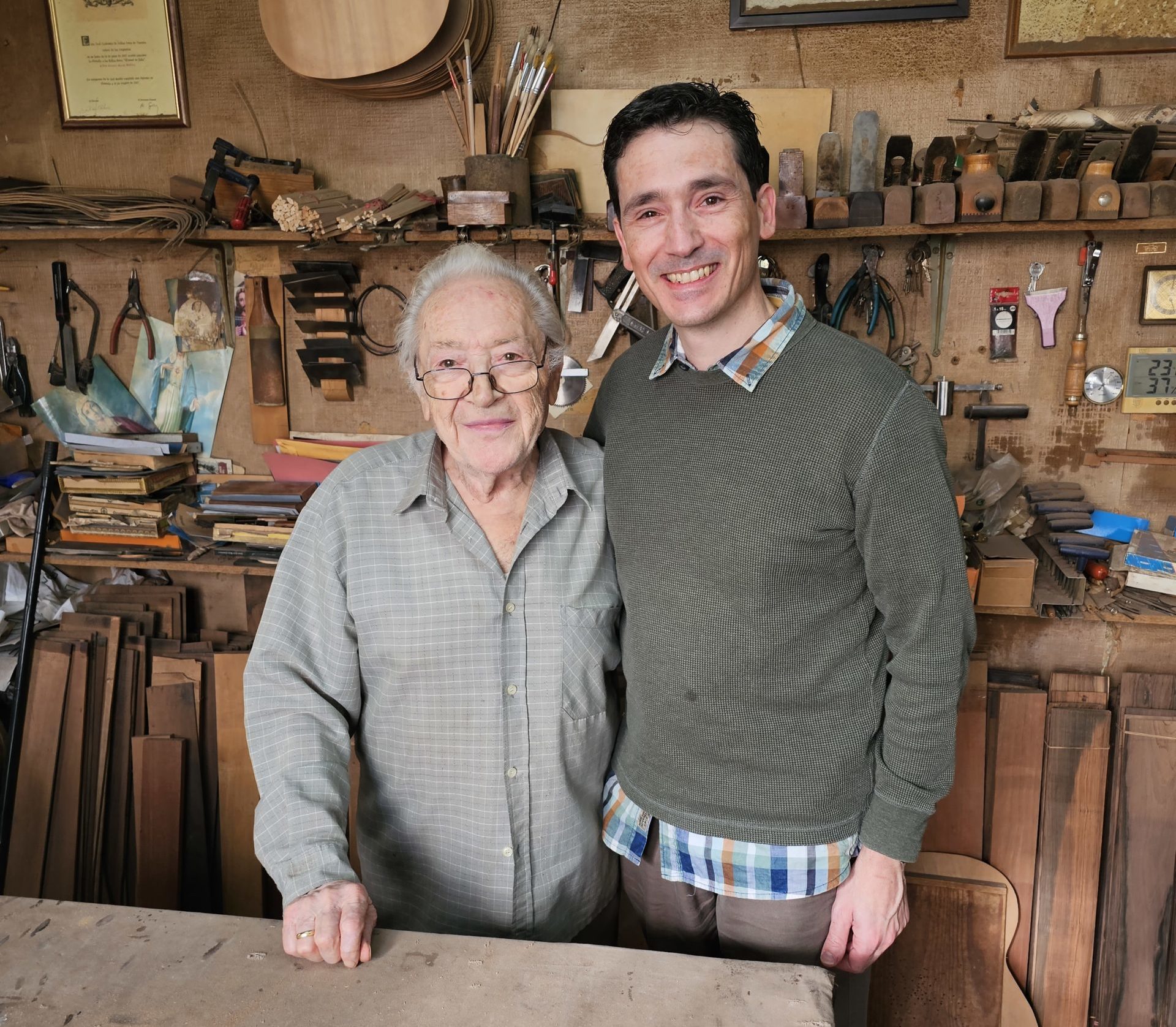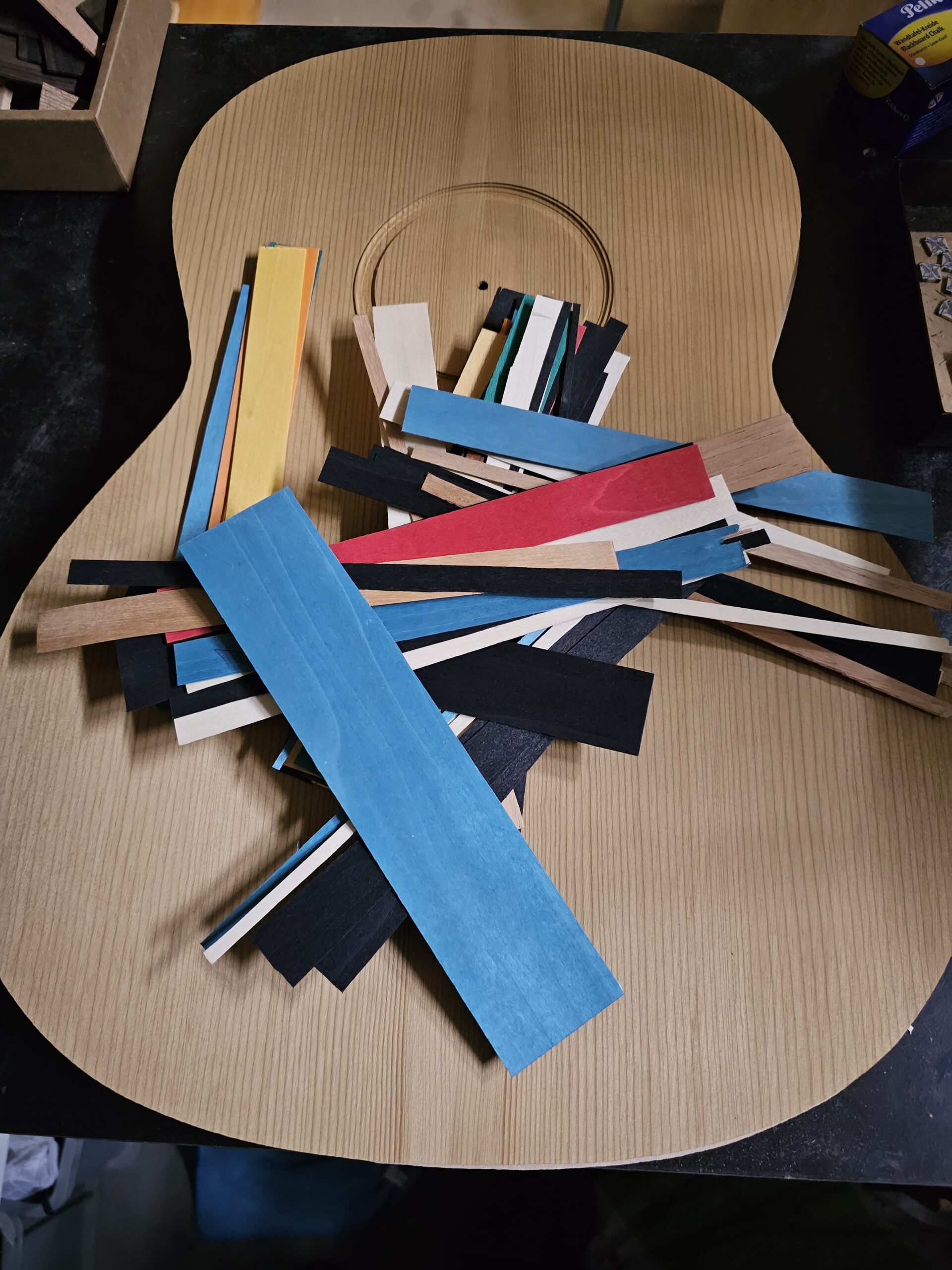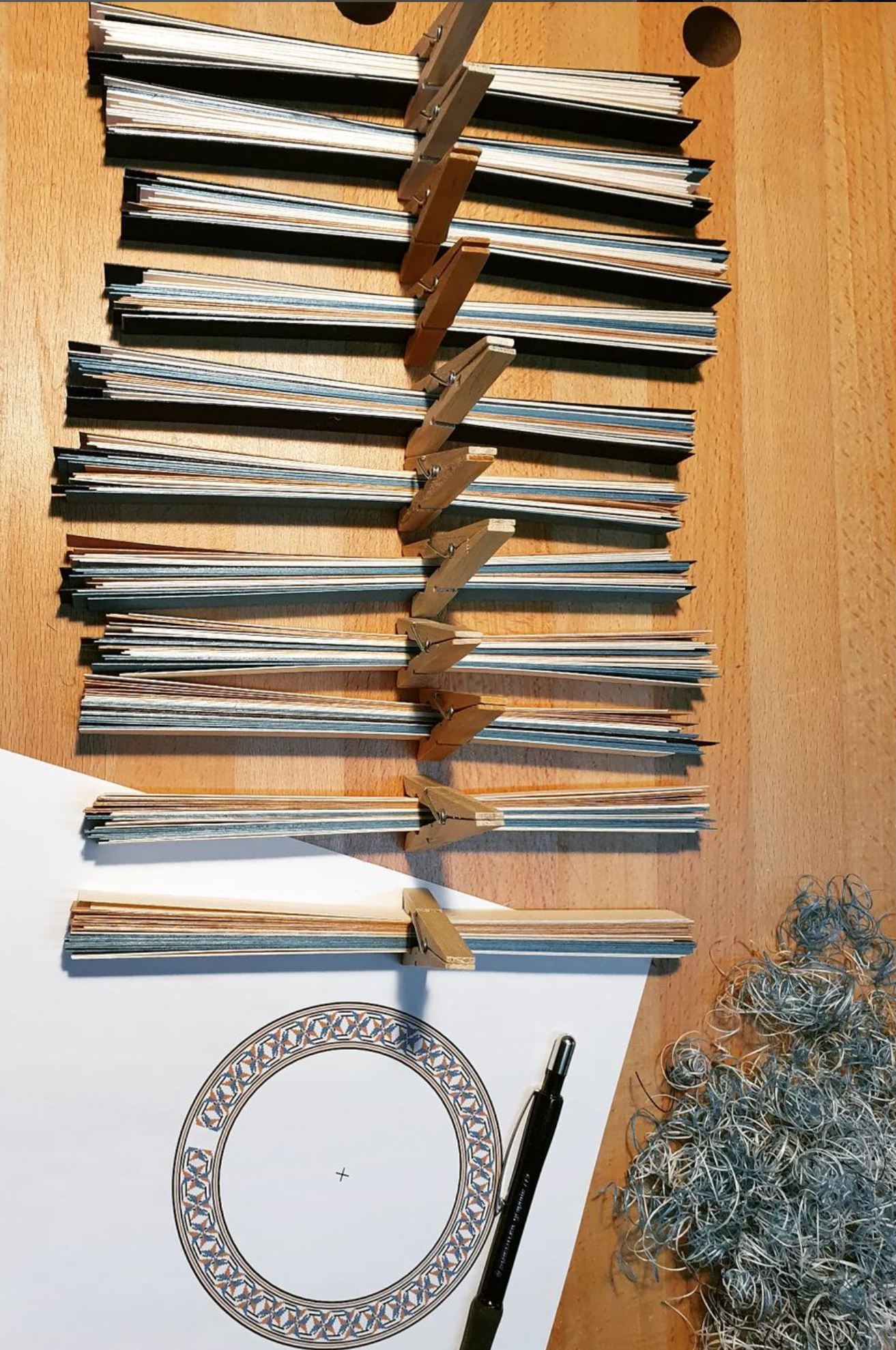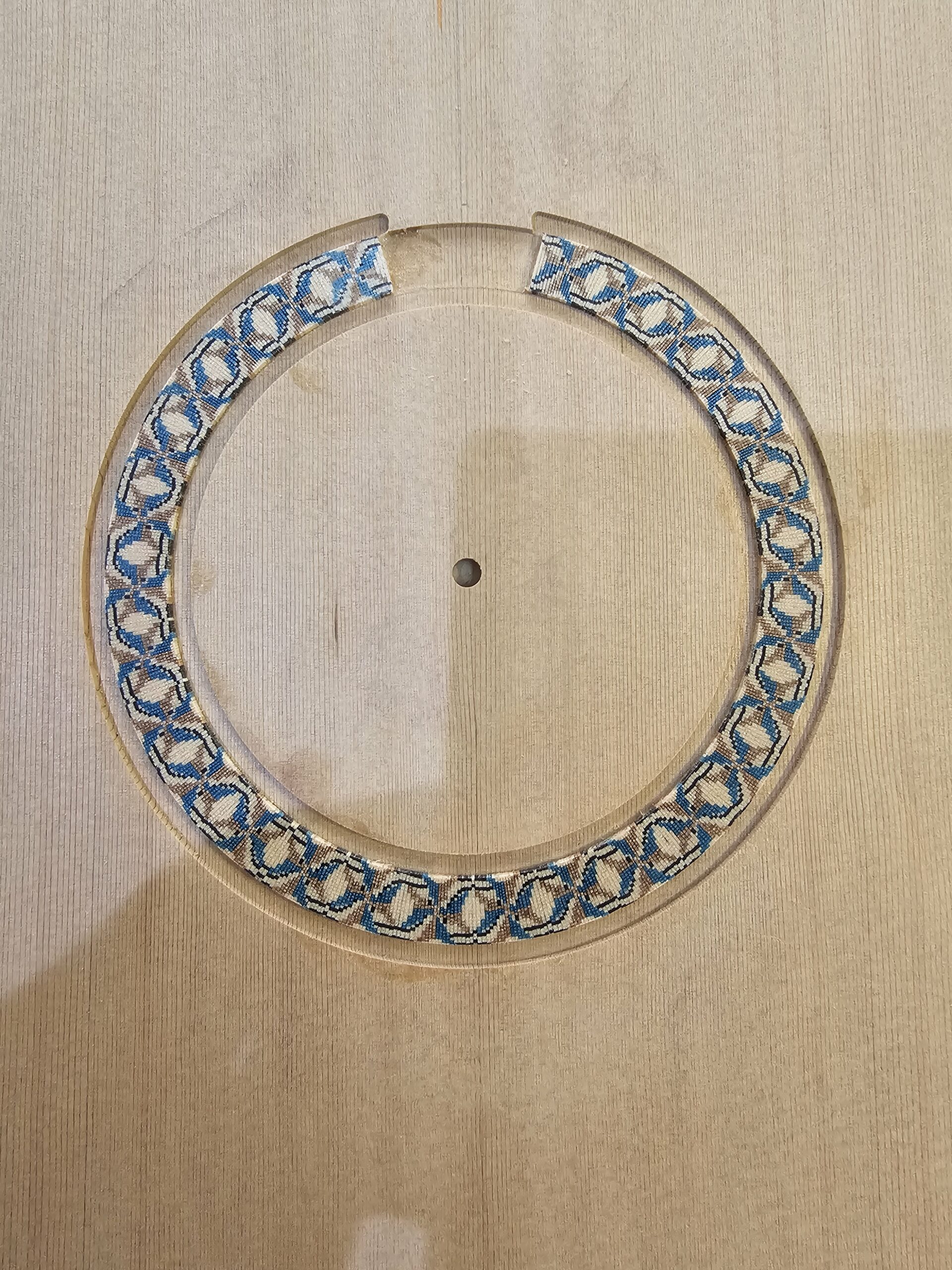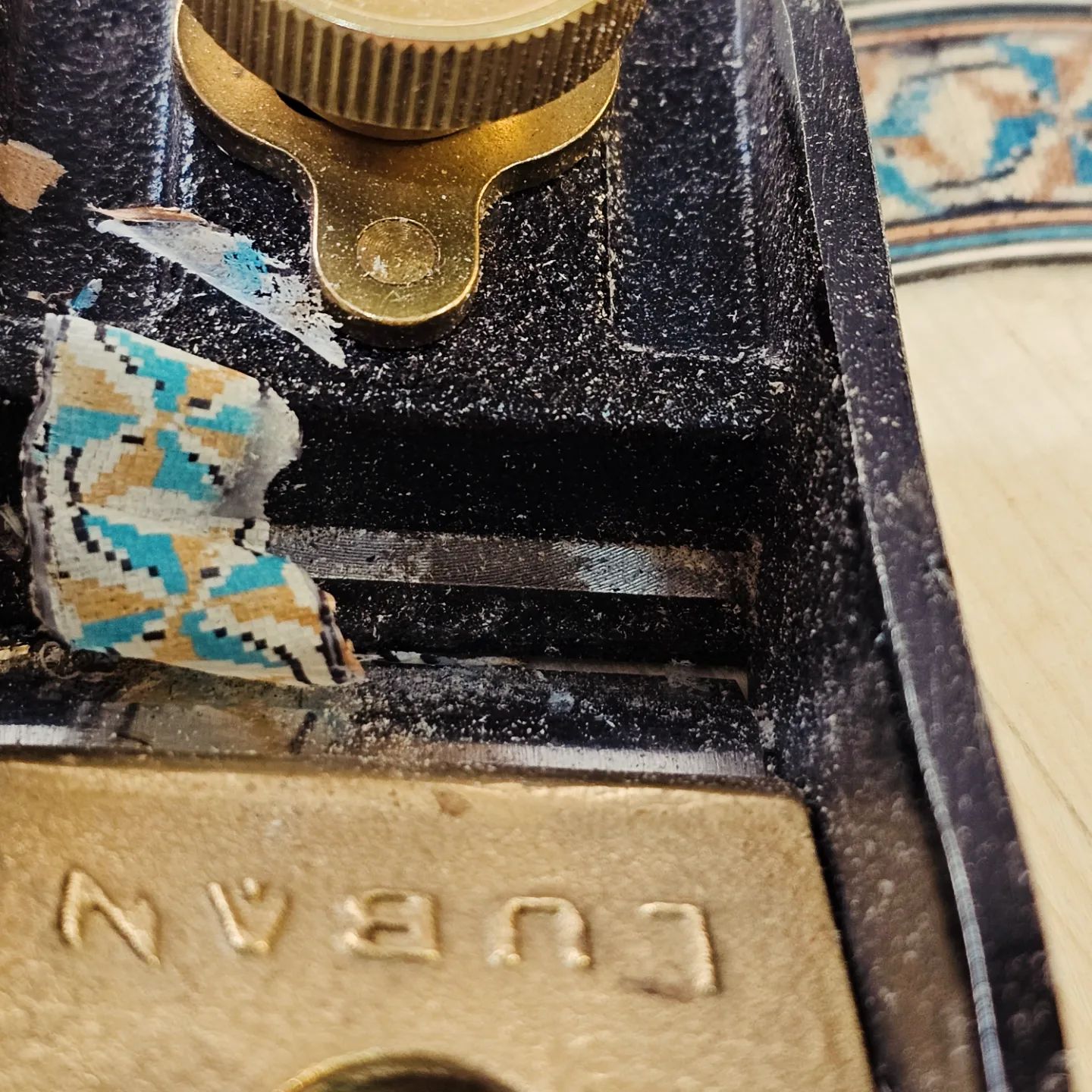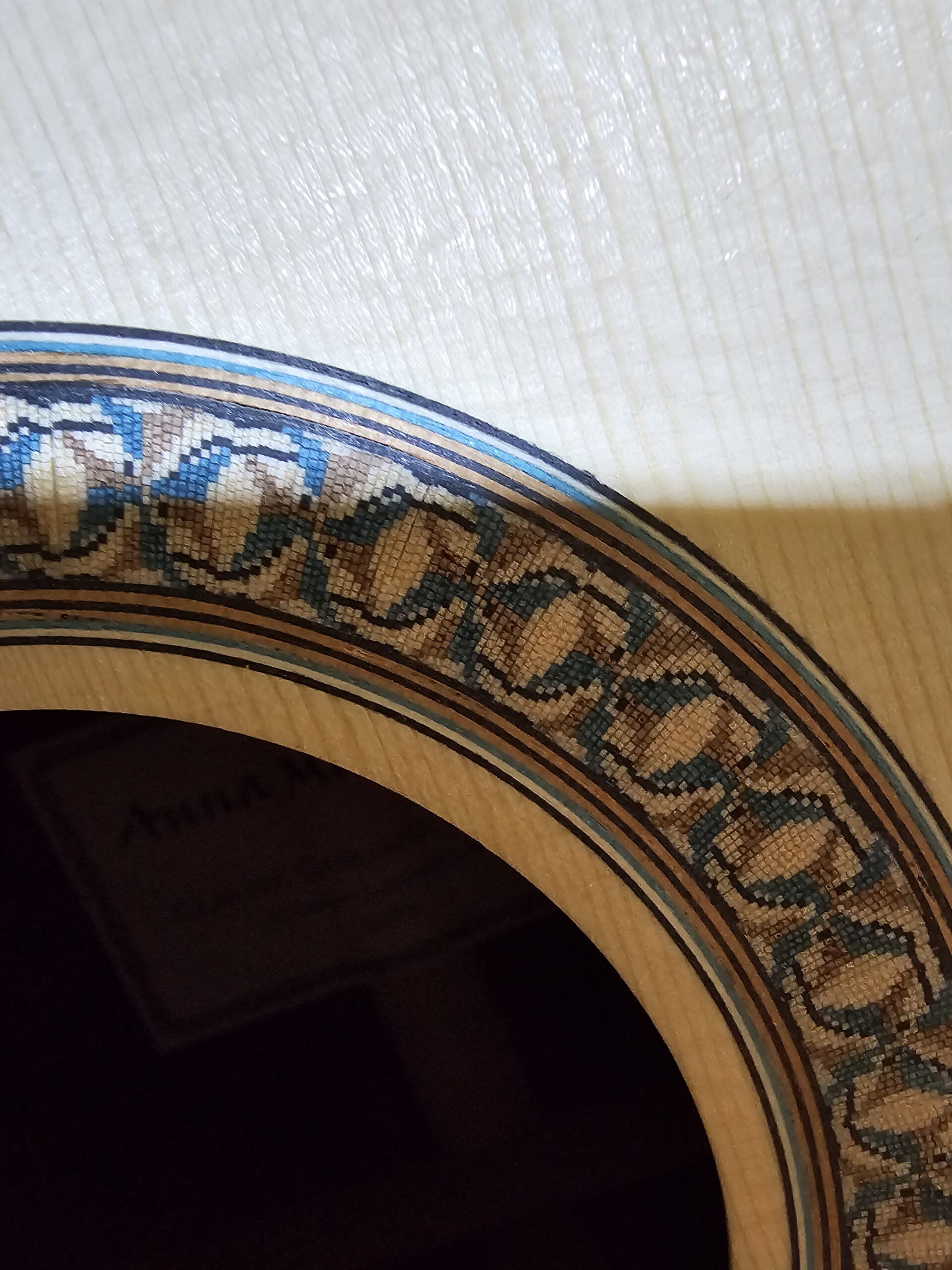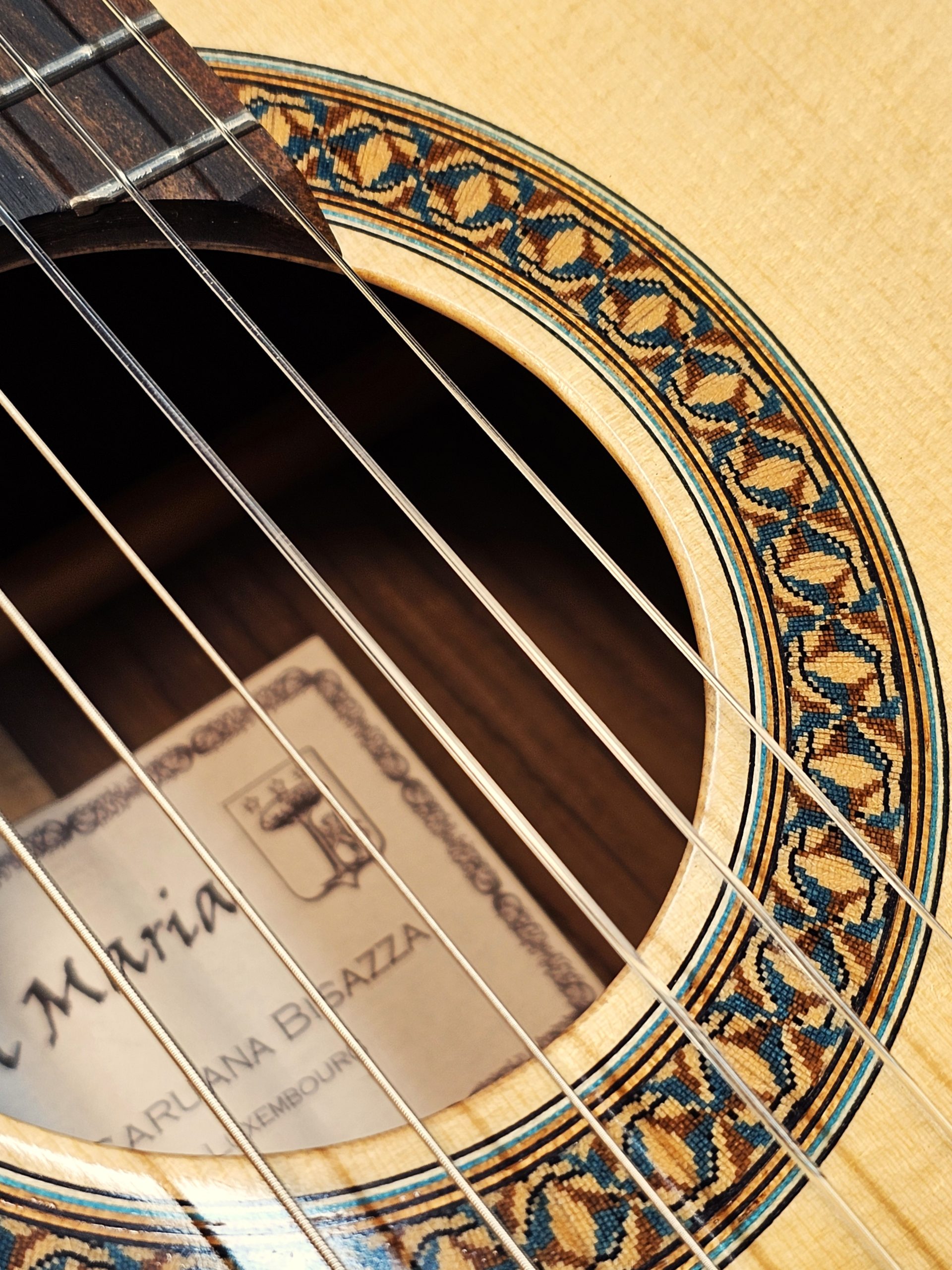“If in Linares I was born into this world, it was in Granada that my eyes were opened to the beauty of life and art.”
— Andrés Segovia

Hello! I’m Claude, a guitar-maker based in the Éislek — the hilly, wooded part of northern Luxembourg, at the foot of the Ardennes.
I have been obsessed with classical guitars and woodworking for over forty years, but as particular passions in their own right. A few years ago, I was overcome by the desire to combine them and start building classical guitars of my own. I travelled to Granada, to take the first steps in learning the craft of guitar-making, according to traditional Granadino methods, with master luthier Stephen Hill.
Since then, I have established my own workshop in Luxembourg, and yet I still go back to Granada to spend time working in Stephen’s workshop. During my stays I also visit some of the great traditional Granada builders such as Rafael Moreno Rodriguez and Antonio Marin Montero, absorbing as much knowledge as I can from this wonderful community.
Albertus, also based in Granada, has been key to my progress as a guitar player and musician. Being a musician as well as a maker has helped me develop a deeper relationship with the instrument.
Photo: Henrick Sandberg Ballowitz
philosophy | wood selection, bracing and assembly | comfort and playability | tuning machines | the rosette | strings, nuts and saddles | finish
Philosophy
Why commission, or buy, a hand-built guitar? It has become easy enough to get a mass-produced instrument off the shelf for a few hundred euros, if not less. Or one could go for a quality factory-built guitar for a bit more. Is it not great that more people have access to music? Of course. So why invest in a hand-crafted instrument?
In the same manner that we value diversity in art and nature, because each work and each experience is organic and unique, so can an instrument that takes months to build impart a sensation that is uniquely personal.
That appreciation can be very subjective, both for the player and the listener. A musician might prefer a sound delivered with punch and accuracy, while another might favour soothing warmth and mellowness instead.
As a guitar maker, it is my mission to create an instrument that gives a voice which will bring joy to the player depending on what they seek, and to the listener because of the resonance between instrument and player.
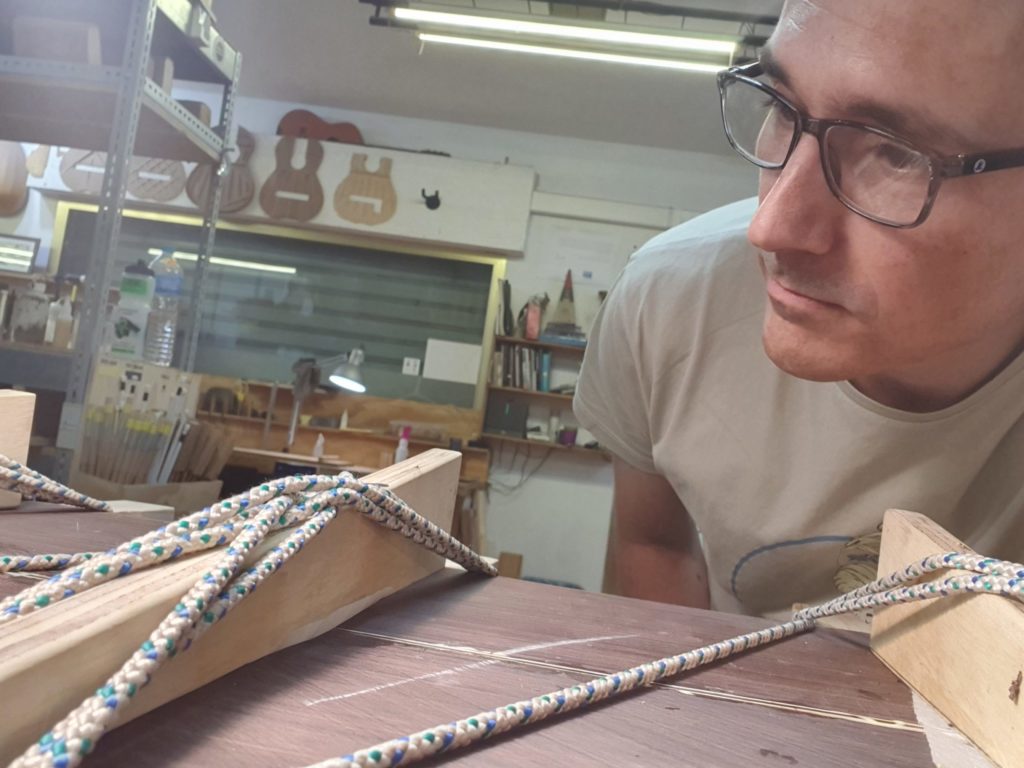
Wood selection, Bracing and Assembly
Sourcing the right material is the first step towards building a great instrument. The particular qualities of wood vary immensely, even within the same species. I look for wood which I believe will offer the greatest musical potential: For the soundboard, a perfectly quartersawn spruce top with a stiffness and density that I like.
I select, collect and store wood very much as if it were a fine wine: storing it for years under perfect conditions, finally selecting and pairing it to create a memorable experience.
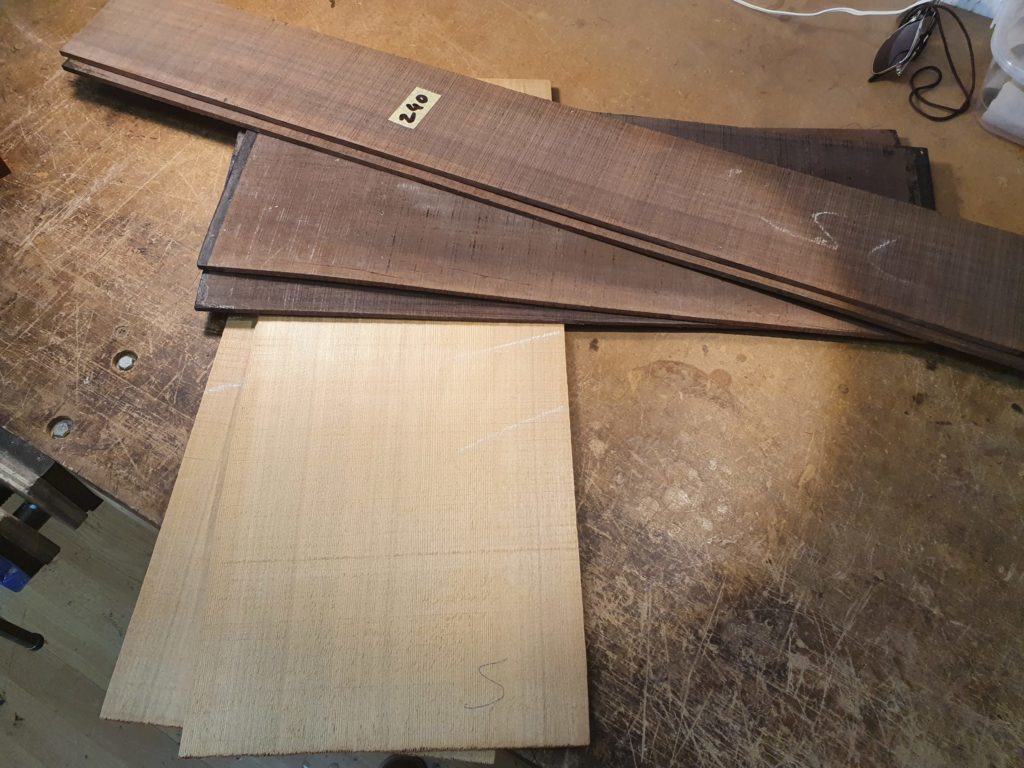
When starting on a guitar, I select, from my stock, the wood which is most likely to satisfy the planned characteristics of the final instrument.
Then I will listen to the wood and let it tell me where it wants to go — to allow me to build a guitar which maximizes the potential of those newly emerging characteristics. If I am building a guitar for you, and we feel that this is going in a direction which is different to what we have discussed, I will set that soundboard aside for another project and we’ll start over.
I am partial to the traditional Granada fan-bracing method as this gives the sound characteristics that I most love in a classical guitar. However, there are decisions to be made — five, six, seven, nine braces… the angle of convergence… the height of each brace… the use of a bridge bar… and many more choices and variables. All of these considerations will affect the final tone of the guitar, the clarity and intensity of the bass, the sustain. And they need to be made in full consideration of the sound characteristics, stiffness and density of the wood chosen for the soundboard.
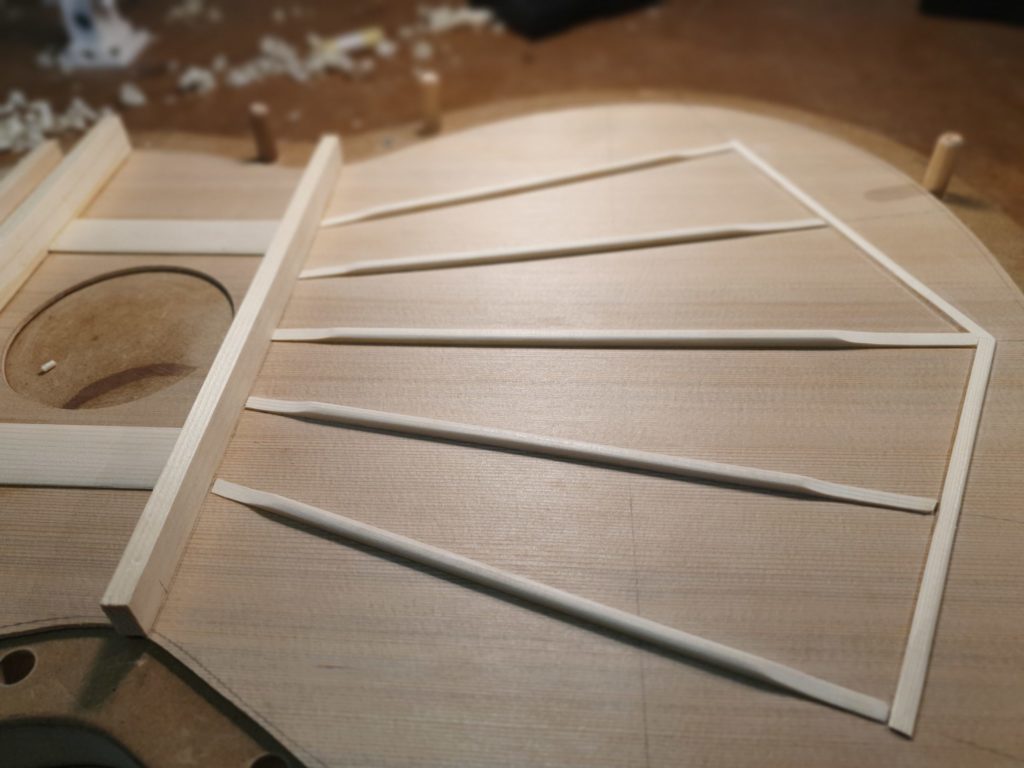
The next step is to pair that soundboard with a back and sides which will complement and further enhance what we are trying to achieve. It might be that a duller, denser tone from heavier ebony would better convey the vibrations created by a bright and crisp sound board, and that the warm characteristics of rosewood are a better fit for a more traditional and balanced sound.
Comfort and Playability
A lot of consideration goes into the choice of frets, the fretboard relief, neck profile and the zoque (heel). For the neck, I prefer denser, heavier wood, and shape it according to the player’s preferences
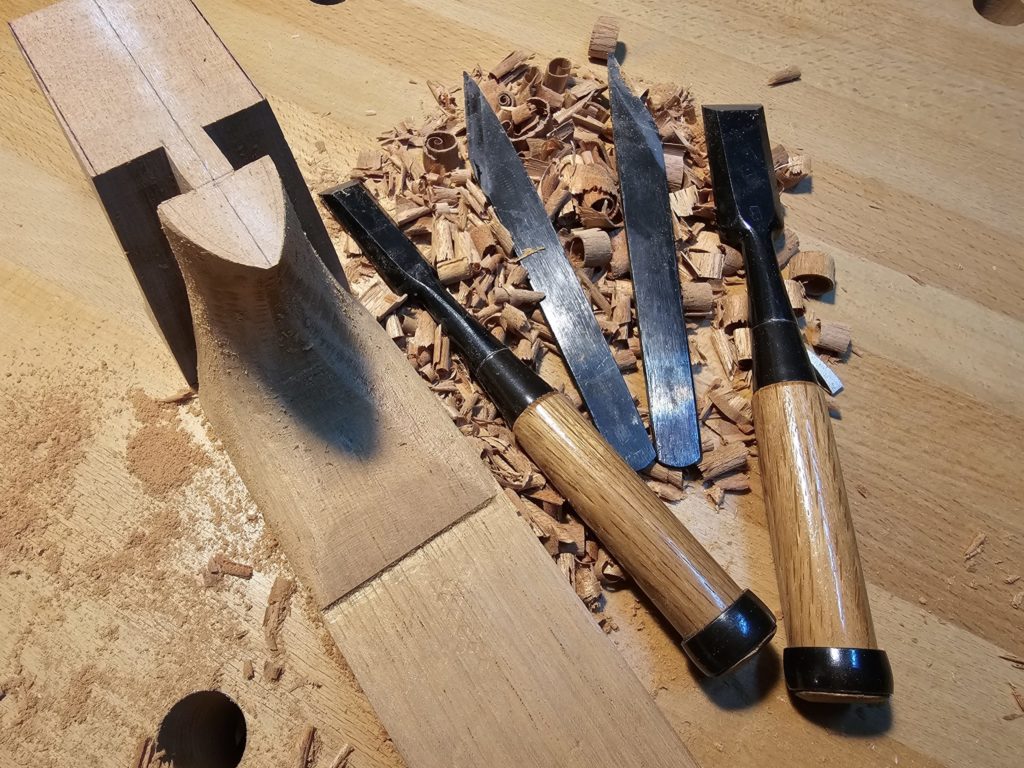
Tuning Machines
The only items which are not built from the ground up by me are the tuning machines and strings.
I prefer top quality precision-made tuning machines created in Germany by Kris Barnett. I had the good fortune to spend some time with Kris and witnessed first-hand his attention to the minutest detail and obsessive commitment to quality. These machines are just a joy: coupled with a well-made nut and good strings, they make tuning a guitar an exquisite experience in itself.
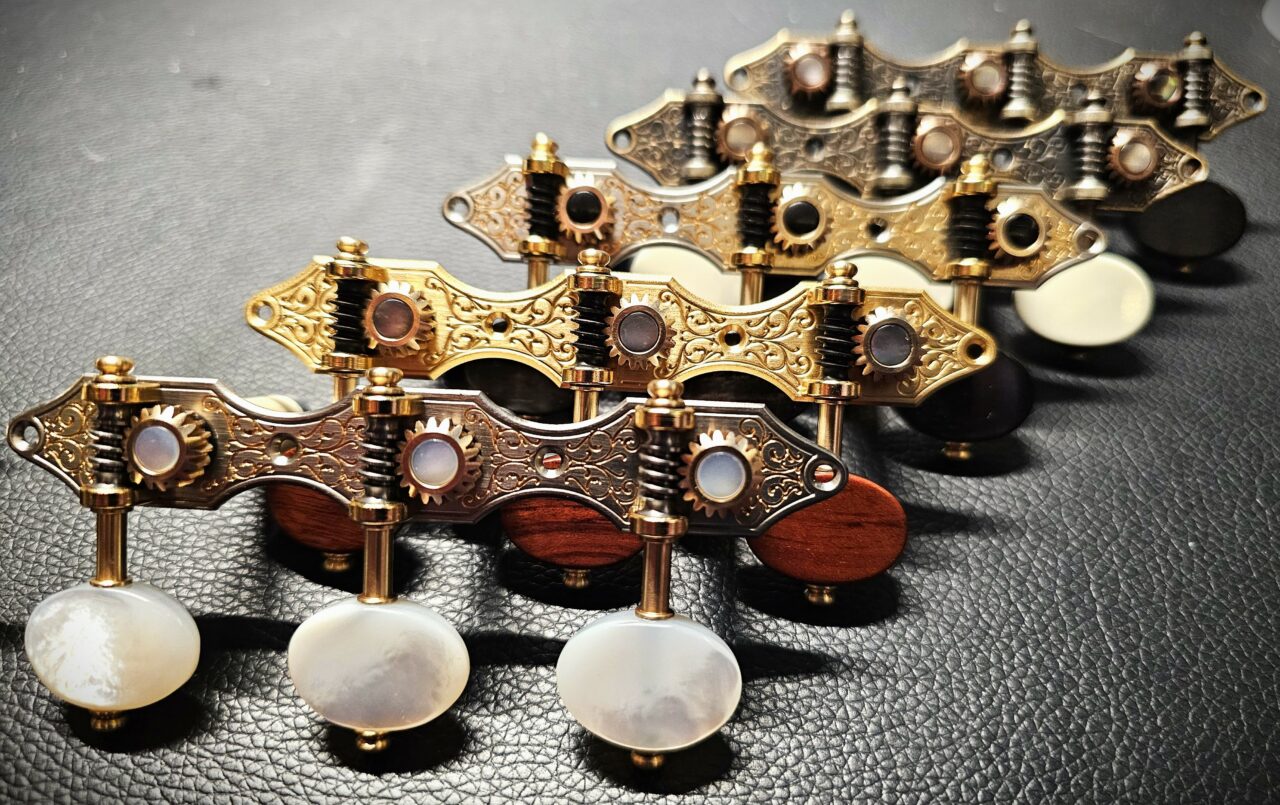
The Rosette
My signature rosette is the eight pointed Maltese Cross, which is a tribute to my home country. It is painstakingly created by hand and my latest design contains over 13,000 coloured wood blocks.
Strings, Nuts and Saddles
Over my 40-year journey as a classical guitarist, I have tried and played a very wide range of strings: from big brands to boutique, from nylon to carbon, nylgut, silver, and bronze hybrids…. I’ve ultimately come to understand that there is no one best string, but pairing a set of strings to a specific guitar is wise. Depending on what we settle for, we can discuss your preference for string spacing and I will design and prepare a nut that matches your strings. We can also prepare other nuts for you to change should your string preference change over time. I’m also very particular about setting up the saddle, and fine tune it several times as the guitar settles-in under tension.
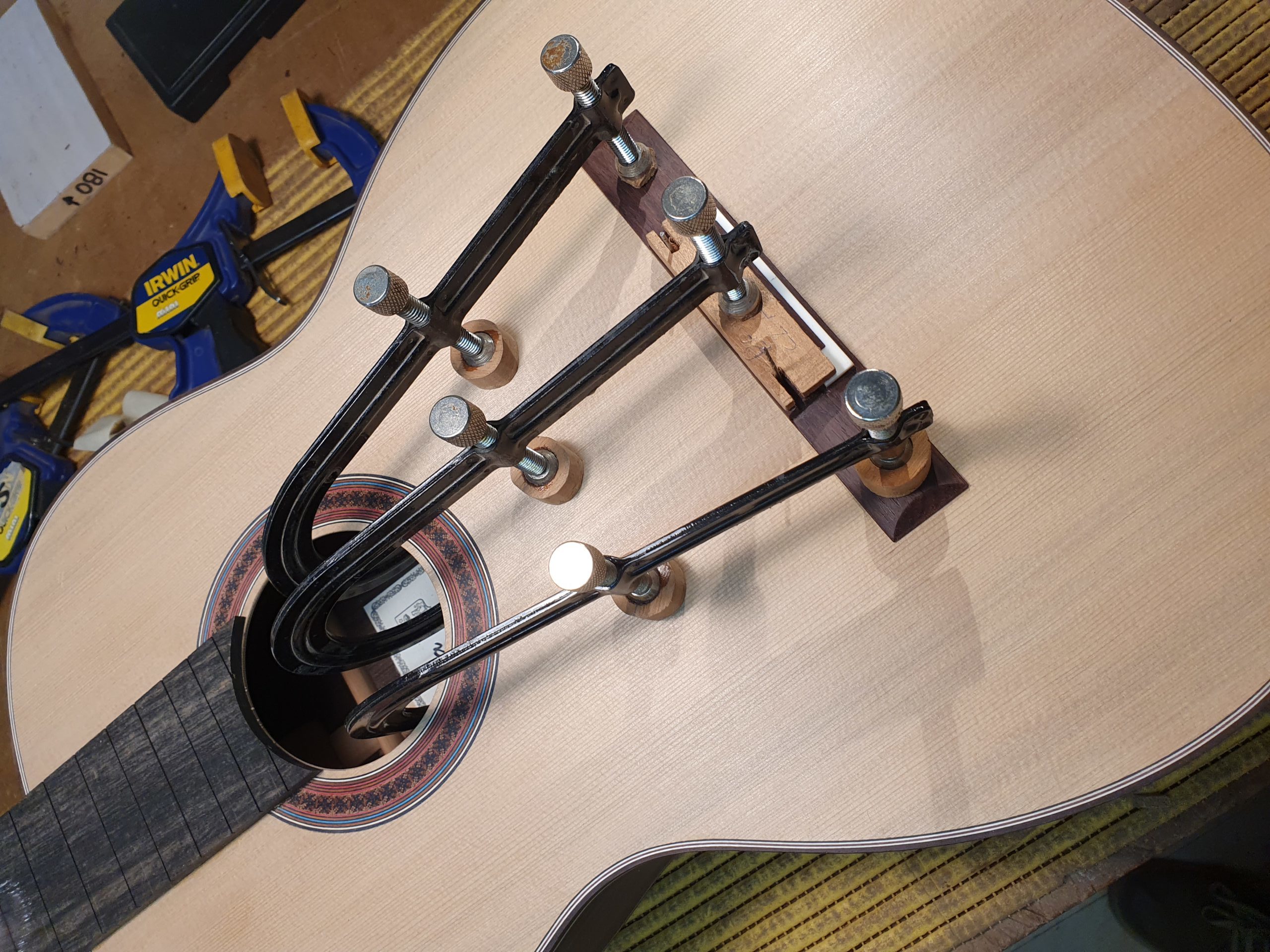
Finish
I finish the entire guitar only with goma laca (shellac), using the French polishing technique. Unlike synthetic varnishes or lacquers, shellac is a natural material. This resin, produced by the female Lac Beetle, is dissolved in alcohol and rubbed into the wood in several thousand microscopically thin layers. Considering the many hours a musician is in contact with their instrument, it is reassuring to know that shellac is also food-safe. Furthermore, I exclusively use food-grade alcohol as the solvent.
French polish also contributes to the tone of the guitar. Many makers who choose to apply a spray finish on their guitars would still opt to French polish the soundboard area for this reason. I choose to do this to the entire instrument. Even though shellac is not as durable a finish as varnish or lacquer, French polish has the advantage of being totally serviceable, and a French-polished guitar can be redone, either partially or entirely, if the existing coats eventually deteriorate or get damaged.
